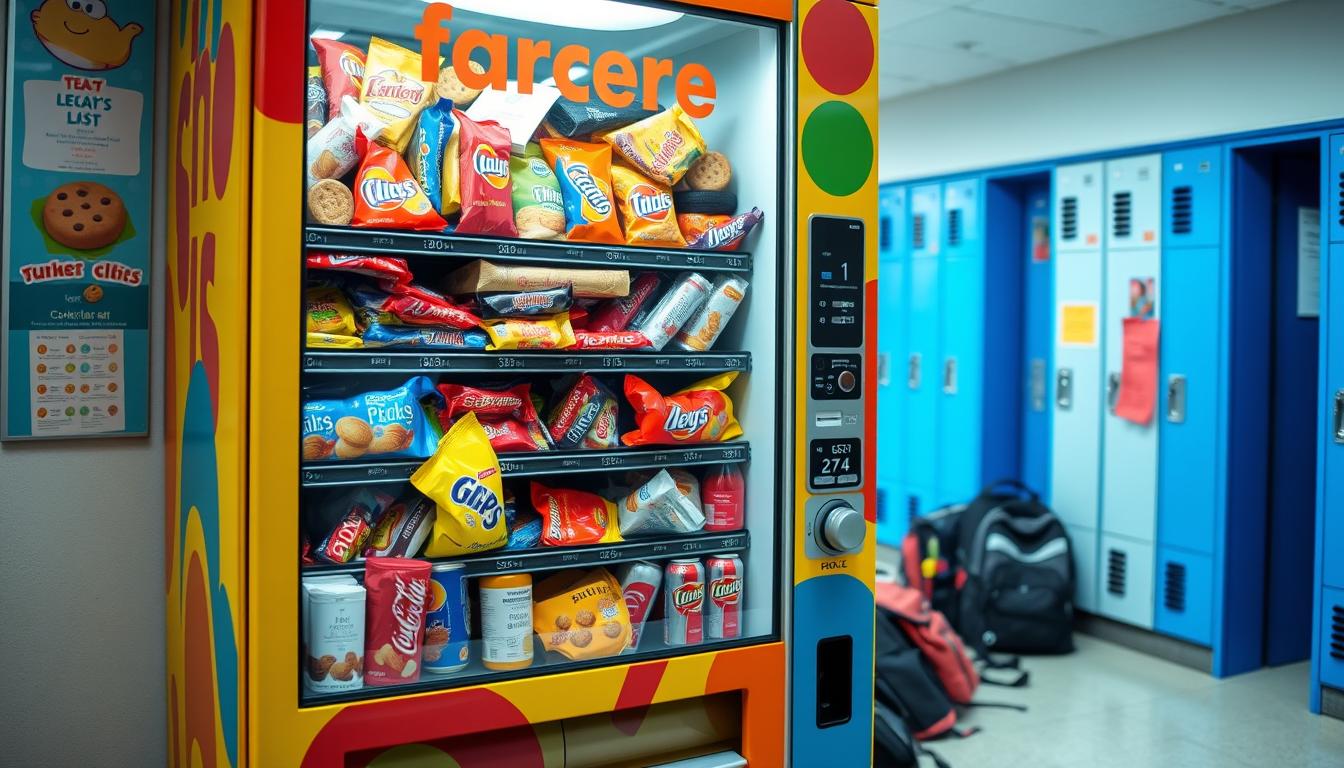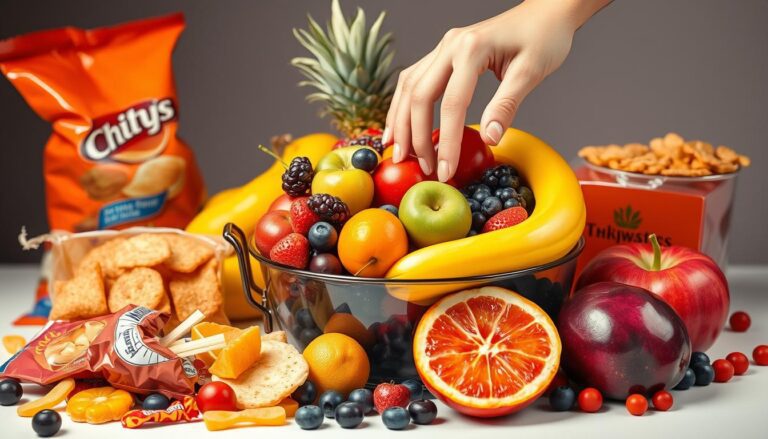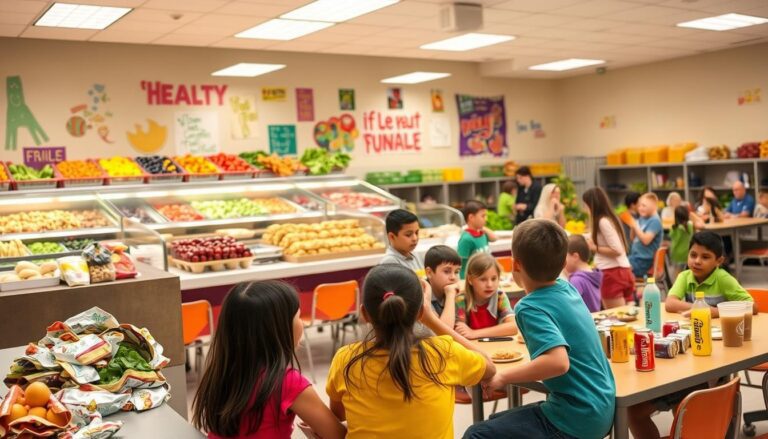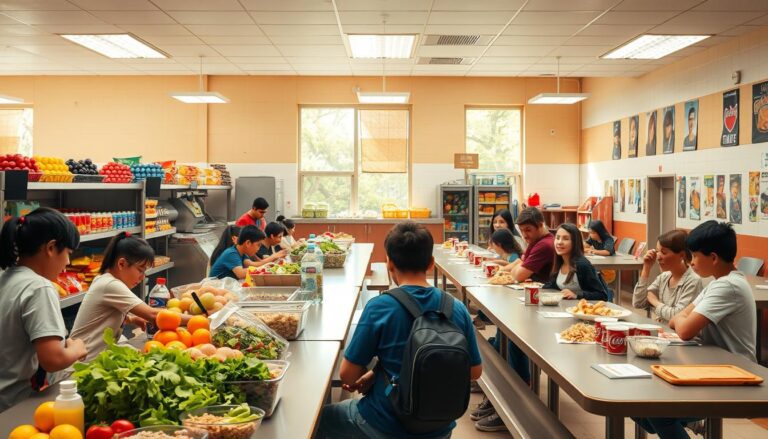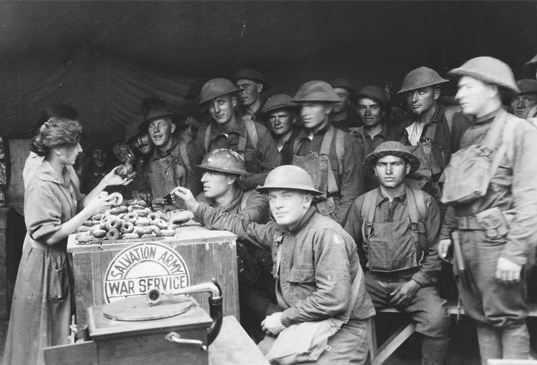Why Should School Vending Machines Carry Junk Food? Exploring Both Sides
Across the United States, the debate on school vending machines is growing. Some say junk food meets students’ cravings and busy lives. Kids love these tasty snacks, making them hard to resist. Yet, others worry about the link between junk food and childhood obesity, with nearly 20% of kids being obese, as the CDC reports (as of 2022).
Deciding if schools should sell junk food is complex. Some schools like Franklin High make about $50,000 a year from vending machines. And in today’s political climate, education is already under-funded, so every dollar counts. In some districts, this money is so critical, you might even call it a “necessary evil”.
Of course, while money is important, so is keeping kids healthy. It’s a delicate balance, and schools must try to offer what students want while being mindful of the need to fight obesity.
Looking into this issue, we must listen to the community and students. We also need to think about the health effects. All sides, all voices, and all the facts have to be weighed. And regardless of which side you might come out on, there still needs to be compromises, so a greater understanding can only be helpful.
Key Takeaways
- Junk food in school vending machines appeals to student taste and convenience.
- Economic factors include substantial revenue generation from vending Machine sales.
- The ongoing childhood obesity crisis raises concerns about junk food availability.
- Balancing student preferences with healthier snack options is crucial.
- Community input plays a vital role in shaping healthy eating initiatives.
The Appeal of Junk Food in Schools
Junk food is popular in schools because it tastes good and is easy to get. Schools have vending machines with many flavors, making these snacks a favorite. Students love the quick access to tasty treats like chips and candy.
Student Preferences for Taste and Variety
Students pick junk food for its yummy taste and fun packaging. Vending machines are in most schools, offering a wide range of snacks. Chocolate bars, chips, and sodas are big hits with kids.
A study found that 23% of high school students with vending machines drink soda every day. This shows how tempting sugary drinks are in schools.
Convenience for Busy Lifestyles
Convenience makes junk food appealing in schools. Snacks are easy to grab between classes, fitting into busy schedules. Many students prefer quick, easy food over healthier options.
| Statistics | Data |
|---|---|
| Presence of Vending Machines | 43% in elementary schools, 74% in middle schools, 98% in high schools |
| Soda Consumption | 23% of students with vending machines consume at least one soda daily |
| Revenue Changes Post-Junk Food Ban | Decrease of more than $50,000 annually |
| Healthy Vending Options | Over 1,100 healthy snack and beverage choices available |
| Smart Snack Standards | Snacks must be under 200 calories and less than 35% saturated fat |
Economic Considerations for Schools
Schools have to think about money when picking snacks for vending machines. These machines are a big help in making money for schools. They bring in about $50,000 a year, which helps pay for school programs and sports.
Revenue Generation from Vending Machines
Vending machines are common in schools. They make money and are easy for students to use. The snacks sold can change how much money schools make.
Most middle and high school students use vending machines. Even small changes in what’s sold can make a big difference in how much money schools get.
Cost-Effective Snack Options
When schools look for cheap snacks, junk food is often the choice. It’s cheaper than healthy snacks. But, it’s not good for students’ health.
Healthier snacks like yogurt, nuts, and fruit snacks are better. They help students eat well and stay focused in class. This shows schools can offer good snacks that are also affordable.
| Snack Type | Cost (per item) | Nutritional Benefits |
|---|---|---|
| Chocolate Bar | $1.00 | High sugar, low nutrients |
| Yogurt | $0.75 | Source of protein and calcium |
| Fruit Snacks | $0.50 | Includes real fruit components |
| Nuts | $1.25 | Rich in healthy fats and proteins |
The Impact on Student Behavior
Offering junk food in schools can greatly influence student behavior. It affects their attention and focus in class. High-sugar snacks can cause energy spikes followed by crashes, making it hard to concentrate.
Schools use junk food as a reward for good behavior and better grades. While it might work in the short term, it can lead to unhealthy eating habits in students.
Effects on Attention and Focus
Unhealthy snacks can harm students’ ability to focus. Studies show that eating junk food lowers cognitive performance. The snacks students choose can greatly impact their classroom attention.
On the other hand, healthy snacks improve focus and concentration. This suggests that offering nutritious options could help students succeed better in school.
Junk Food as a Reward Mechanism
Using junk food as rewards in schools might seem to encourage good behavior. Administrators give out unhealthy snacks for good grades and behavior. This approach might motivate students in the short term.
But, it can lead to a long-term reliance on junk food for rewards. This could result in unhealthy eating habits that last into adulthood, affecting students’ overall well-being.

Nutritional Balance vs. Indulgence
It’s tough to balance nutritional needs with the temptation of tasty snacks in schools. Junk food is tempting, but teaching moderation is key. Schools can teach students about nutritional balance and how it affects their health.
Learning to read nutritional labels helps students make better food choices. This knowledge empowers them to pick healthier options.
The Role of Moderation in Diet
In schools, teaching moderation helps students eat healthier. Many students choose quick, tasty snacks from vending machines. It’s important to remind them that snacks can be part of a healthy diet if eaten in small amounts.
Offering a variety of snacks, both healthy and indulgent, helps students make better choices. This way, they don’t feel like they’re missing out.
Understanding Nutritional Labels
Nutritional labels are a great tool for students learning about snacks. Schools can teach programs on how to read these labels. This knowledge helps students understand the importance of balance in their diet.
By learning about calories, fat, sugar, and serving sizes, students can enjoy their favorite snacks wisely. This knowledge helps them appreciate the value of balance.
| Snack Type | Calories | Fat (g) | Sugar (g) | Portion Size (oz) |
|---|---|---|---|---|
| Classic Potato Chips | 150 | 10 | 2 | 1 |
| Sweet Potato Fries | 120 | 4 | 1 | 1.5 |
| Loaded Nachos | 300 | 15 | 3 | 2 |
| Baked Potato Chips | 100 | 2 | 0 | 1 |
Parental Perspectives on School Snacks
Parents are key in shaping what kids eat, including school snacks. Many worry about junk food in school vending machines. This is because childhood obesity is a big problem, affecting nearly one-third of kids in the U.S. Parents are now more aware of the importance of healthy snacks.
Concerns About Junk Food Availability
Parents think junk food makes kids eat unhealthy. Studies show that school snacks are often high in fat and sugar. This makes parents worried about the harm of bad food choices for their kids.
Balancing Treats With Healthy Options
Parents know kids need treats sometimes, but they want a balance. Schools are starting to limit sugary snacks and offer healthier ones. Talking about school food can help create policies that focus on kids’ health. Schools providing better snacks is what parents want for their kids’ wellbeing.
| Aspect | Parent Concerns | Proposed Solutions |
|---|---|---|
| Availability of Junk Food | High fat and sugar content | Introduce wellness policies |
| Health Impacts | Rising obesity rates among children | Offer healthy snack alternatives |
| Student Preferences | Taste and convenience | Balance treats with healthy options |
| Parental Involvement | Lack of communication | Engage parents in school food policy discussions |
School Policies on Food Choices
Recently, school policies have changed a lot. They now focus more on what foods students can choose from, thanks to new rules on vending machines. These rules aim to make sure students eat better by offering healthier options. They also try to limit access to foods that aren’t as good for you.
Schools are starting to see how important vending machines are. They play a big role in what students eat every day.
How Regulations Influence Vending Machine Stock
New rules on vending machines mean snacks and drinks have to be healthier. The USDA’s Smart Snacks in School standards set these rules. They say snacks can’t have more than 200 calories and can’t have too much saturated or trans fat.
By following these rules, schools say they see better food choices. They also see fewer unhealthy options. Studies show that 15 out of 18 studies found these rules helped make food choices better.
Success Stories from Schools with Balanced Options
Many schools are now focusing on healthier food choices. They work with Healthy YOU Vending to offer snacks like Nutri-grain Bars and baked chips. These snacks are good for students and meet the rules.
These efforts are making a big difference. They show that with the right rules, schools can be healthier places. Students are happier and more loyal to their schools because of these changes.
| Policy Aspect | Outcome |
|---|---|
| USDA Smart Snacks in School Compliance | Healthier snack offerings with |
| Increased Availability of Healthy Foods | 15 studies supported this outcome |
| Improved Nutritional Awareness | Better food choices among students |
| Partnership with Healthy YOU Vending | Access to over 1,100 health-conscious options |
Innovation in Vending Machine Offerings
Schools are changing their vending machines to focus on health and nutrition. They now offer healthier snacks, making it easier for students to eat well. This change brings convenience and nutrition together.
Introducing Healthier Snack Alternatives
Vending machines now have fresh fruits, yogurt, and granola. This is to help students eat better. The U.S. government helped by allowing schools to choose machines that offer healthy foods. Some popular items include:
- String cheese
- Carrots with hummus
- Dried fruit
- Milk and yogurt
- Veggie fries
This change helps improve nutrition and promotes healthy eating in schools.
Trends in Vending Technology for Schools
New vending technology is key to these changes. Cashless payment systems make buying snacks easy and clean. They also help schools understand what students like to buy.
Sustainability is also important. Machines now offer snacks and drinks from eco-friendly sources. They also use less energy and promote recycling. Some features include:
| Trend | Description |
|---|---|
| Sustainable Sourcing | Providing snacks and drinks from sustainably produced sources. |
| Eco-Friendly Supplies | Offering school supplies made from recycled materials. |
| Energy-Efficient Machines | Incorporating LED lighting and minimizing energy use. |
| Recycling Initiatives | Promoting responsible waste disposal through recycling programs. |
Vending technology keeps changing to meet student needs. It offers both popular snacks and healthy options. This mix helps schools support students’ health and well-being.
Understanding Food Cravings in Adolescents
Adolescents often face intense food cravings. These are influenced by various psychological factors. Stress from school and peer pressure can lead to a desire for junk food.
Junk food offers immediate satisfaction and comfort. The dynamics around social eating play a crucial role in these cravings. Students may select snacks based on what their friends choose, further impacting their eating decisions.
Psychological Factors Behind Junk Food Temptation
The influence of psychological factors on food cravings in adolescents cannot be understated. Stressful school environments frequently lead students to seek comfort in sugary or salty snacks. Many students reported feeling overwhelmed by their academic responsibilities.
This prompts them to indulge in food that offers a quick escape. This tendency can become habitual, opening the door to even unhealthier behaviors. The satisfaction derived from junk food reinforces the behavior.
The Social Aspect of Snack Choices
The social context of snack consumption significantly impacts adolescents’ choices. Peers often shape food preferences. It’s vital for schools to foster an environment that accommodates both healthy and indulgent snack options.
Many students expressed a desire to have input in cafeteria offerings. This indicates that greater involvement might lead to more balanced eating habits. Understanding the role of social eating can help schools curate a selection of snacks that satisfy cravings while promoting overall well-being.
| Craving Type | Psychological Factor | Social Influence |
|---|---|---|
| Sweet Snacks | Stress Relief | Peer Preference for Sugary Foods |
| Salty Snacks | Comfort Eating | Sharing with Friends |
| Processed Foods | Convenience and Accessibility | Trends in Snack Choices Among Peers |
Community Input on Snack Options
Community input plays a big role in picking snacks for school vending machines. By listening to students and parents, schools get to know what people like. This makes everyone feel included and supports healthy choices.
Engaging Students and Parents in Decisions
Getting students and parents involved in snack choices makes them more excited. Surveys help schools figure out what snacks people want. Schools can hold meetings and send out questionnaires to get lots of feedback.
This way, schools can offer snacks that everyone likes. It also makes students more interested in eating well.
Surveys to Gauge Acceptability
Surveys give schools important info on snack choices. They find out if people like healthy or fun snacks more. Schools can then pick snacks that most people want, but still keep them healthy.
Feedback is key to making vending machines better. It helps schools offer snacks that are both tasty and good for you.
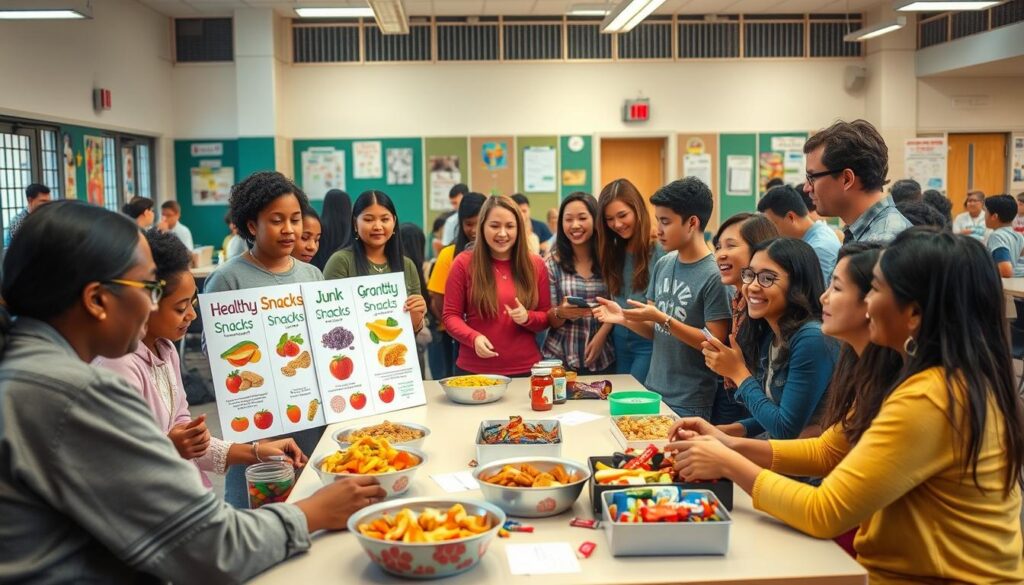
| Survey Topic | Response (%) |
|---|---|
| Support for Healthy Snacks | 75 |
| Desire for Junk Food Availability | 50 |
| Importance of Variety | 80 |
| Willingness to Pay More for Healthy Options | 65 |
| Engagement in Snack Decision Process | 85 |
Conclusion: Striking a Healthy Balance
Finding the right mix of junk food and healthier snacks in school vending machines is key. Junk food is appealing for making money and satisfying cravings. But, it’s crucial to focus on a healthy balance in snack choices.
Schools should offer a variety of affordable options. These should not only taste good but also be good for the body and mind.
Recommendations for Snack Selection
Schools can promote snacks that follow nutritional guidelines but still interest students. Offering healthier snacks with occasional treats can help students make better choices. Teaching students about nutrition and labeling can help them make informed decisions.
This education can lead to long-term habits that fight obesity in school-age children.
Importance of Education on Healthy Eating
Teaching students about healthy eating is essential. By adding nutrition education to the curriculum, students learn the value of a balanced diet. This knowledge, along with clear information on snack contents, can lead to positive changes.
These changes can improve their overall health and academic performance. It can also reduce health problems linked to junk food.
Armed with a fully rounded nutritional education, the students can make better choices on campus and off — including deciding to eat junk food sometimes, but not others, and maintaining a mindset of healthy moderation.

